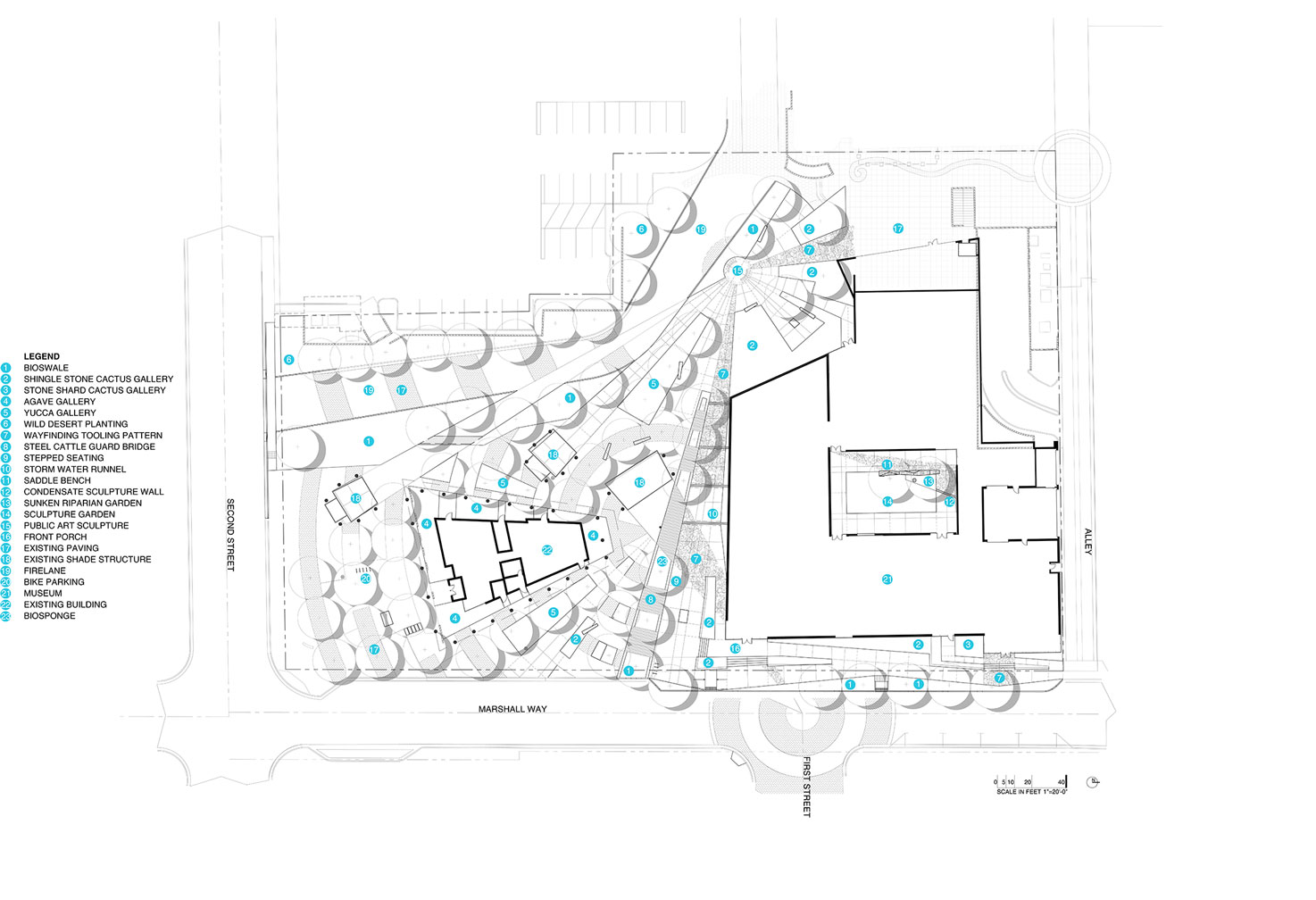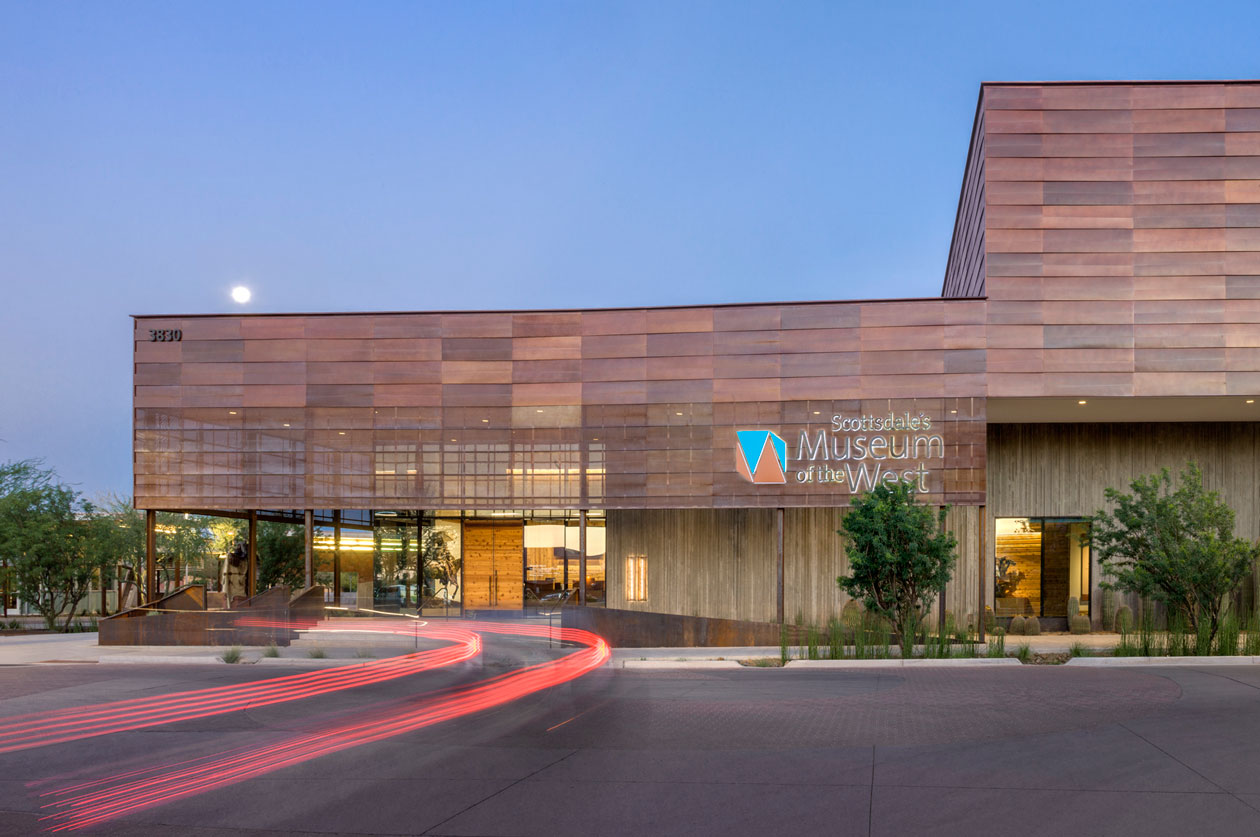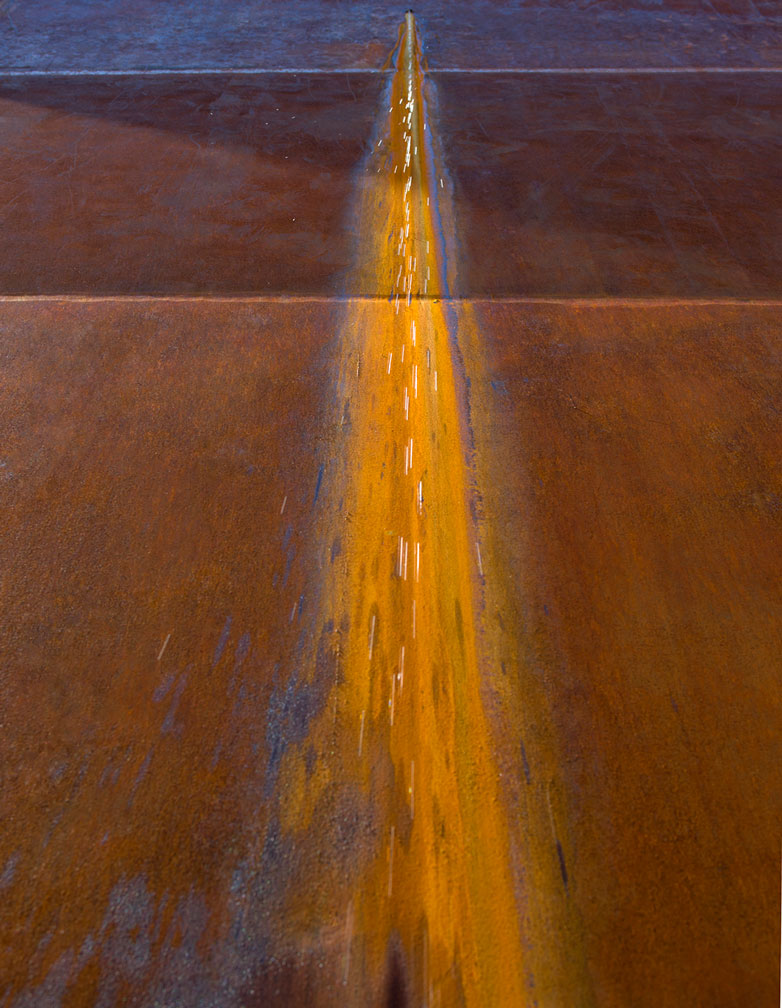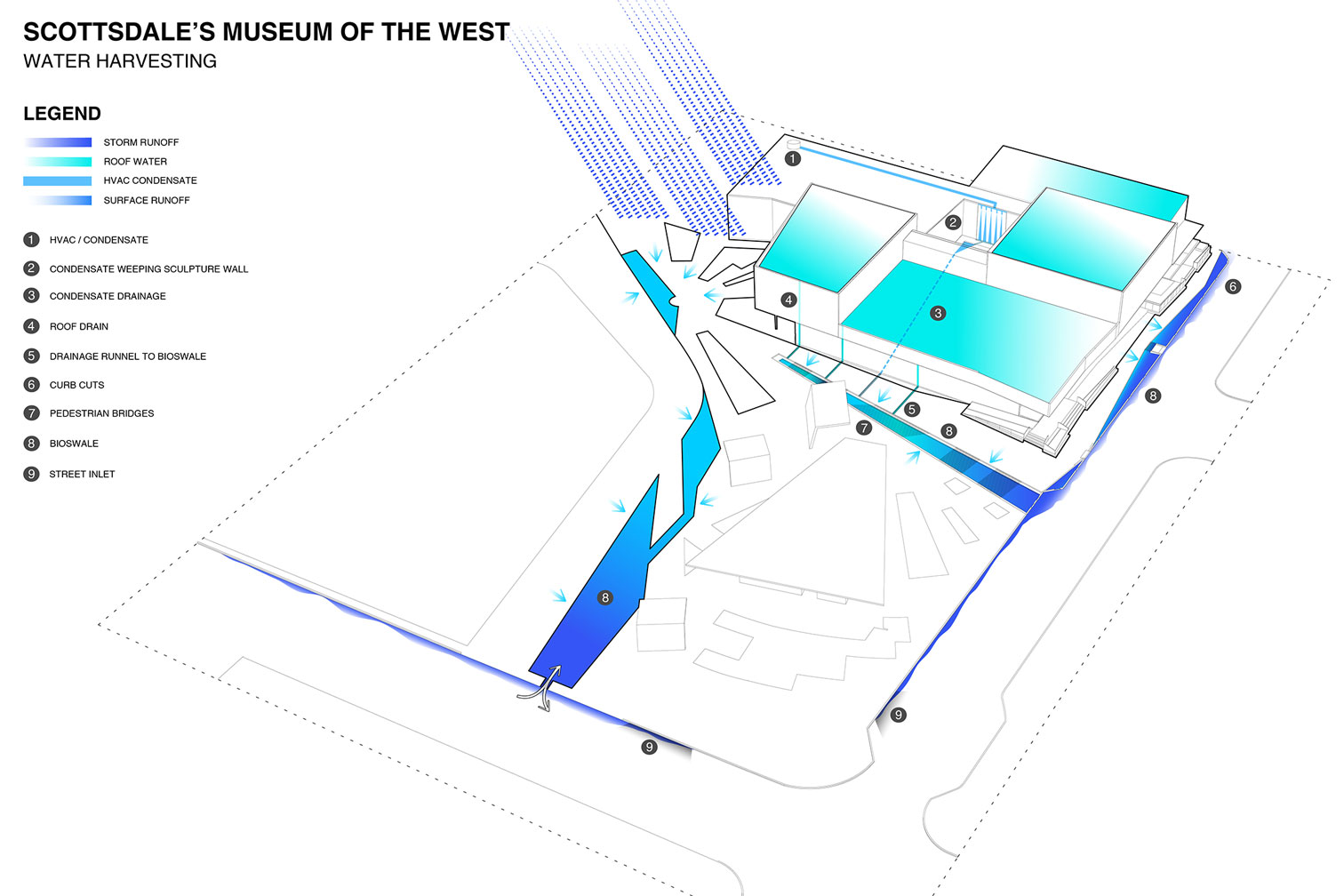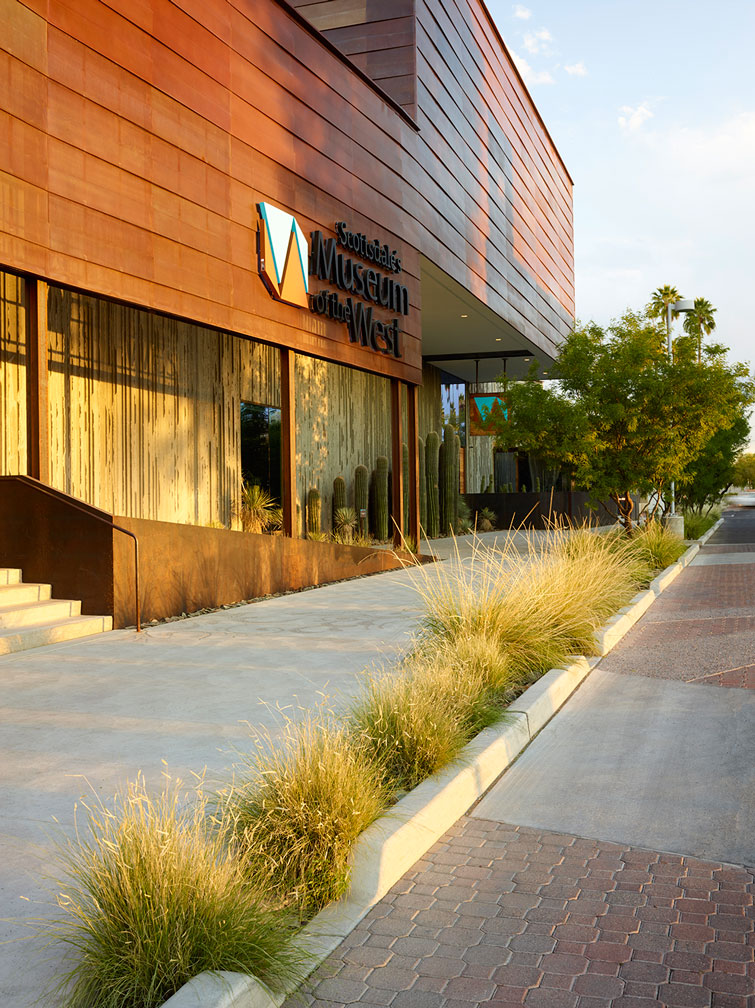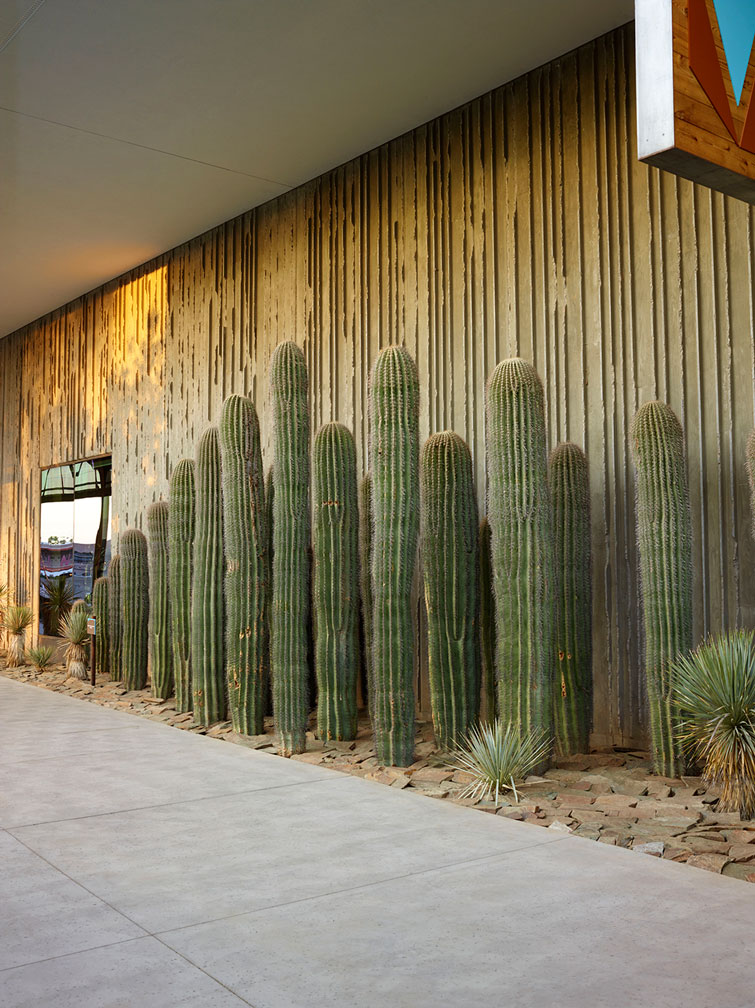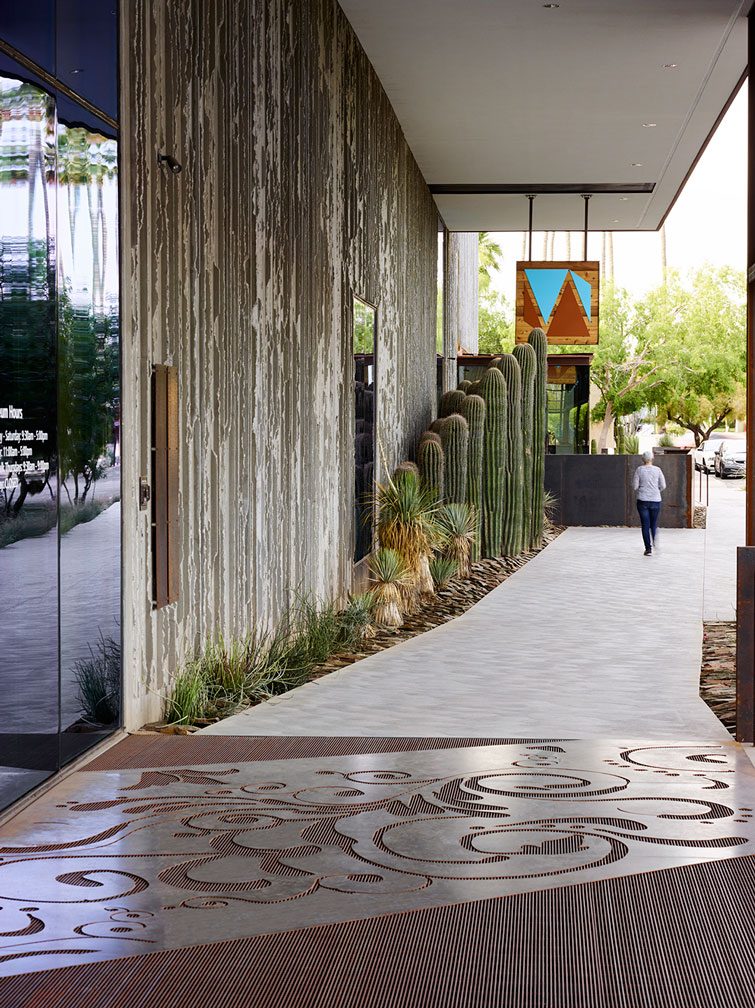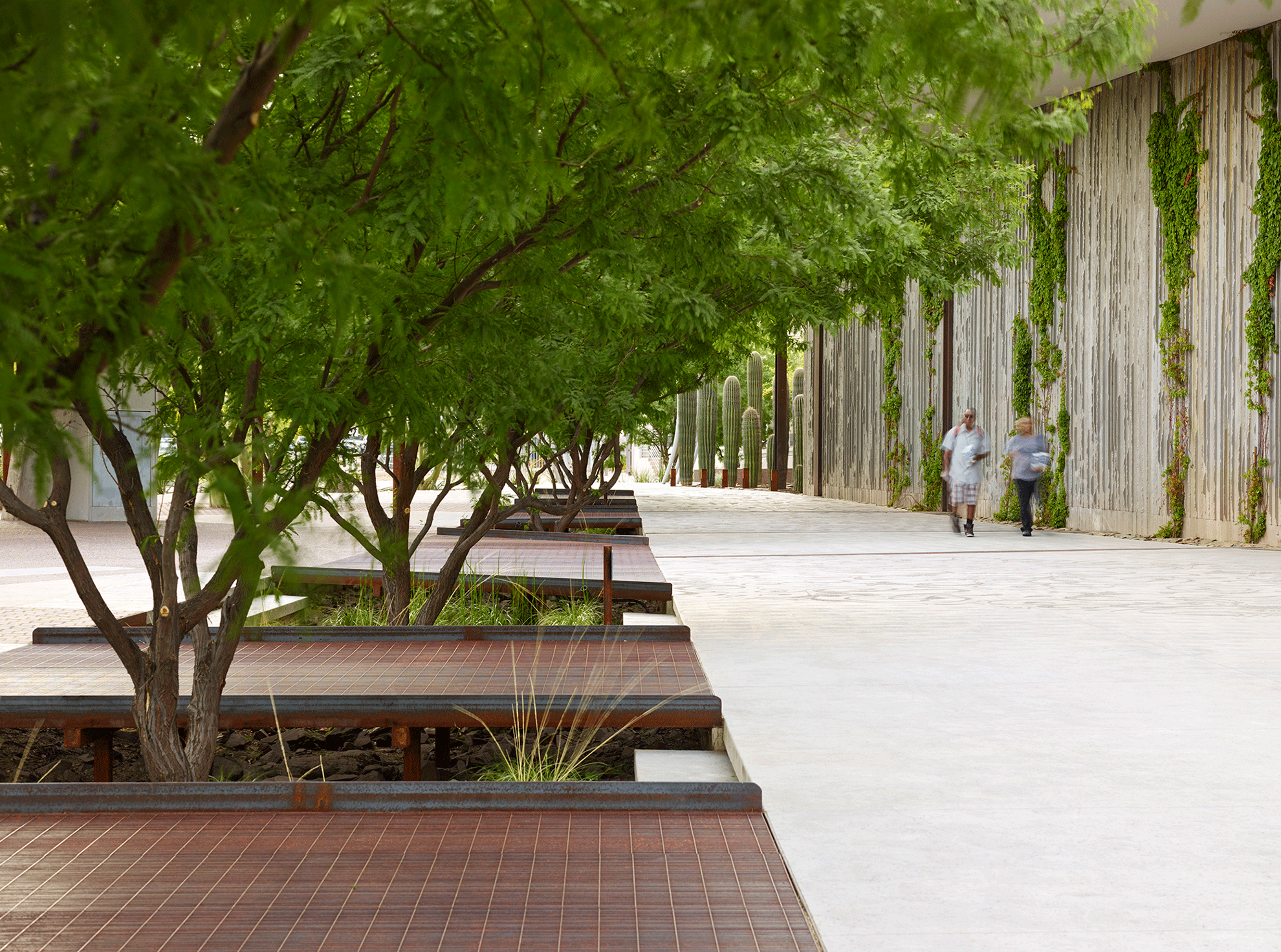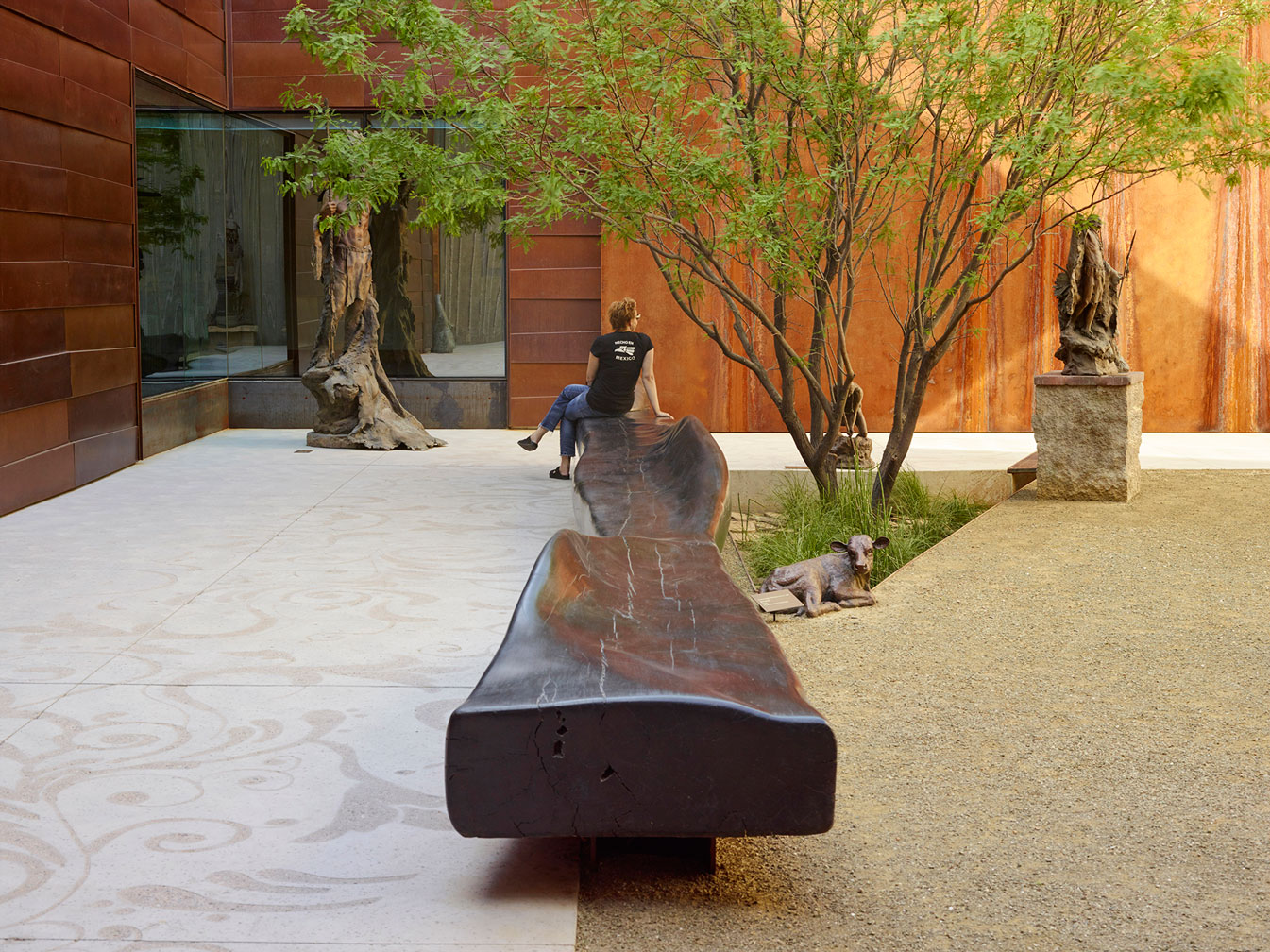Scottsdale’s Museum of the West
SCOTTSDALE'S MUSEUM OF THE WEST
Scottsdale’s Museum of the West, is a certified Smithsonian Affiliate museum that celebrates Western art, history, and culture, a place where the old west meets the new west. The plaza design consists of an arrangement of curated spaces shaped by a southwestern consciousness. Each gesture of design is sculptural and performative and speaks to the unforgiving and majestic quality of the southwestern desert and the craft of western hands.
Scottsdale receives only 9 inches of rain per year. As water harvesting is the underlying concept of the site, bioswales are located throughout the entire project. At the intersection of three points of arrival and parallel to the new building, a large, wedge-shaped bio-sponge lined with seedless Mesquite trees intersects and emanates from Acconci’s geometries. Steel grates, reminiscent of cattle guards, bridge the wedge. The angles of the bridges continue in sandblasted tooled patterns, evocative of western embroidery and leather designs, leading visitors to the entrances of the museum.
Seating steps flank the sides of the bio-sponge allowing visitors to sit amongst the native grasses which help to filter water that deposits from runnels that collect roof water and HVAC condensate from the museum. Along the street, curb cuts allow street runoff to collect and filtrate through bioswales. These bioswales collect stormwater and filter surface water runoff from the street removing bacteria, phosphorous, oil, grease, and nitrogen while preventing solids from leaving the site.
Within the building, the courtyard space features a large-scale steel wall made of bent plates of rusted steel called ‘The Weeping Wall’ and a 39-foot-long, hand-carved saddle bench made from a single trunk of beetle-infested Ponderosa Pine salvaged from Northern Arizona. Like the water that runs down canyon walls, the sculptural steel wall in the interior courtyard is designed to ‘weep’ condensate water from the museum’s HVAC system and deposit it into a sunken riparian garden that irrigates native, drought-tolerant plants. During peak seasonal months, the weeping wall deposits over 25 gallons of water per hour into the courtyard and runnels which outlets to meet additional water collected from the Museum’s roof area and Scottsdale’s nearby streets. Together, thousands of gallons of water travel through an open and sculpted system of bioswales that simultaneously hydrates the site’s native vegetation and undergoes treatment before entering the city’s drainage system.
Reminiscent of desert pavement and arranged by hand, slabs of Arizona Brown Schist are layered within garden spaces to provide a rich backdrop of texture but also preserve moisture in the soil. Sixty-five-year-old Saguaro, Barrel Cactus, and Yucca are composed within the schist gardens creating an immersive and visually reorienting experience while showcasing the sculptural qualities of Western desert species. Mature Palo Brea trees were salvaged and transplanted on the site, bringing instant shade to the sculpture plaza.
DETAILS
Location: Scottsdale, Arizona
Size: 1 acre
Client: City of Scottsdale
Completion Date: 2015
PROJECT TEAM
Studio Ma
SERVICES PROVIDED
Hardscape and Landscape Design
Construction Observation
PUBLICATIONS
Diamond in the Rough
Landscape Architect & Specifier News | Nov 2016
Reviving Regional Culture: Avoiding Cliché
Laura Raskin, Metropolis Magazine | Aug 2016
AWARDS
2016 ASLA Arizona Design President’s Award
2016 ASLA Arizona Design Award of Excellence
2016 Arizona Forward Association Environmental Excellence Awards, Crescordia Award

